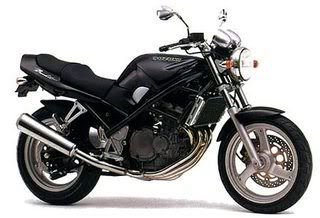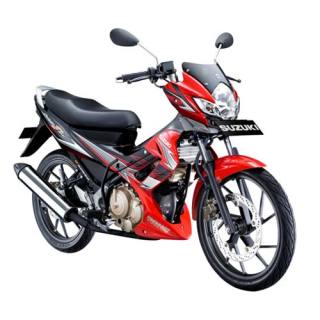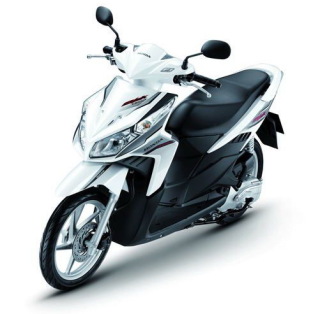
Today I want to provide information and reviews for you who want to try a new motor and more heroic, namely Honda Blade. Blade attractiveness is a more sporty appearance is similar to the Honda CS1. This is seen from the front lamp design and placement. In Blade, the headlights are no longer on the handlebars, but in the "hood" or the forewing. In this way, the headlights and turn Sein did not come together when the handlebars are moved to the right or left. Headlights are brought together with Sein lights located on both sides.
Form of the front fenders or sepatbor also different. Honda assess more sporty and stylish shape. Design style taillights, enough with the white and red color combination. This duck design improvements compared with previous Honda products is the position of the bend into the handlebars. Honda called the style "racing". With this, it is expected, the motor targeted for young children this will be easy to maneuver around the corner.
Order Blade is a result of new design. According to Honda, the framework is more robust and tailored to their abilities or performance of the machine is more ferocious than the Revo or the Fit.
At the front, between between the seat with the handlebars, was given a "cover" or cover it with a higher position than the common duck. Similar to that used in the Suzuki and Yamaha Jupiter MX Arashi.
Other Supplementary Protectors are machines that are on the right side in the form of small iron bars bent and installed near the Footstep. Exhaust pipe, color coated on the mufflers are designed with an oval shape. To prevent the wheels stop spinning when the chains come off, Honda equip it with a stopper.
Machine - For a power source, Honda SOHC engine with a capacity of 109.1 cc. Power output reached 8.46 PS @ 7500 rpm and torque of 0.86 kgf-m @ 5500 rpm. So, their performance was among the Revo and Supra 125.
However, according to K. Fujihara, Honda R & D Leader, Blade 5% more efficient than the Revo. It can be obtained because the Blade is a new generation engines from Honda. This machine a few components of friction lower than any other Honda engines. Between the piston and rocker arm (valve trigger), cylindrical form yanng "off-set", the piston with oil semportan upside down, the lighter weight and anti-scratch. With such development, in addition to the consumption of more fuel-efficient, Honda claims this engine Blade environmentally friendly or meet Euro-2 standard.
Blade Honda launched as a breakthrough innovation from Honda motorcycles to meet consumer desire youthful, active, love a challenge and want to look different. Comes with a bolder concept, with the form, features and powerful performance.
Honda Blade Design starts from the overall dimensions, weight of vehicle, engine and frame that is used is very proportional so as to make this bike suitable for a motorbike rider who likes a sporty stylish but still comfortable ride for daily mobility.
This motor carries an innovative concept motorcycle and sporty with the jargon of "Winning With Blade", defined as the winner in the competition in its class. There are three factors to be achieved with this jargon that is: Winning Style, Performance and Winning Winning Personality.
"Winning Style" is a reflection of the body that inspired the design configuration of the motor design that looks great from the overall design. Also equipped with attractive features such as 3D Fearing Shield Sporty, Sporty Oval mufflers, Illuminated Dialmeter, and Body Mounted Front Head Light & Winker.
"Winning Performance" to apply the latest Honda engine 110 cc, SOHC, four not that tough, stubborn, powerful, responsive yet economical in fuel consumption and easy in maintenance. Application of technology and sophisticated quality Honda makes Honda Blade is able to produce maximum power with a velocity faster acceleration, more power and easy to reach high speeds so that they can rely on.
High performance can be achieved with a fixed price competitive product. The key to success is thanks to the development of both technological innovation and product production methods had a high efficiency, which not only done by the AHM but also by the vendors.





